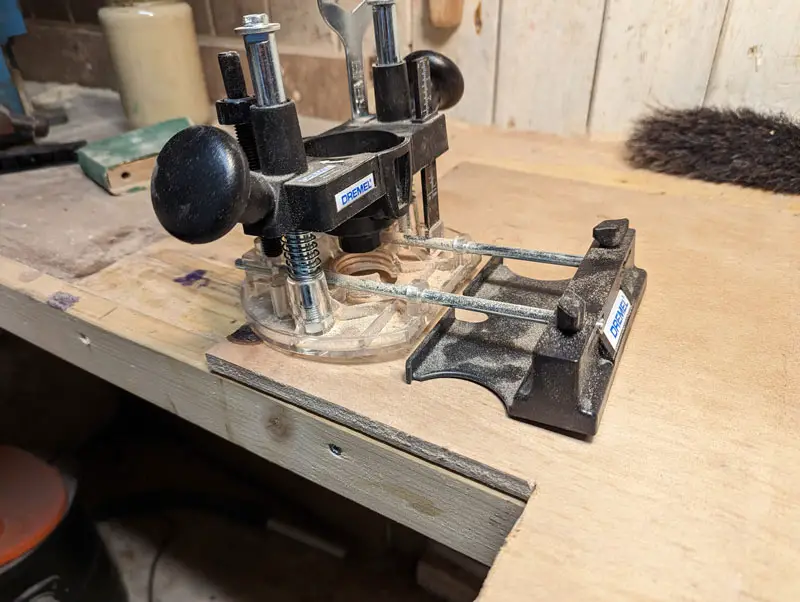
A Dremel is not the best tool to make straight cuts in wood, but in a pinch, you can achieve decently straight cuts with a Dremel. This will take some effort though.
To make a straight cut in wood with a Dremel rotary tool we can use a straight-edge guide, like the Dremel #678 straight-edge guide or the Dremel #335-01 plunge router. We cut the wood in several passes with the Dremel #562 tile-cutting bit going deeper with each pass.
The method above will result in the cleanest cut, but it is not the quickest. I found a method that is much faster, but it will leave the cutting edge a little bit rougher. Let’s get into the different methods of making straight cuts in wood with a Dremel.
How To Make Straight Cuts In Wood With A Dremel – Three Methods
Using a Dremel for making straight cuts in wood can be compared to using a toothpick to cut up a cake. It is really not the best tool for the job. It takes longer than using a proper saw, and it is much less convenient.
But it is possible to make straight cuts in wood with a Dremel, especially in thin, flat pieces of wood like plywood, MDF, or basswood sheets.
It is important to have one of the more powerful Dremel’s to make these straight cuts, you will not come a long way with a Dremel Stylo+ for example.
I recommend using something like a Dremel 3000, 4000, 4300, 8220, 8260, or similar.
My favorite Dremel model is the Dremel 4000.
Method 1 – Using A Straight Edge Guide
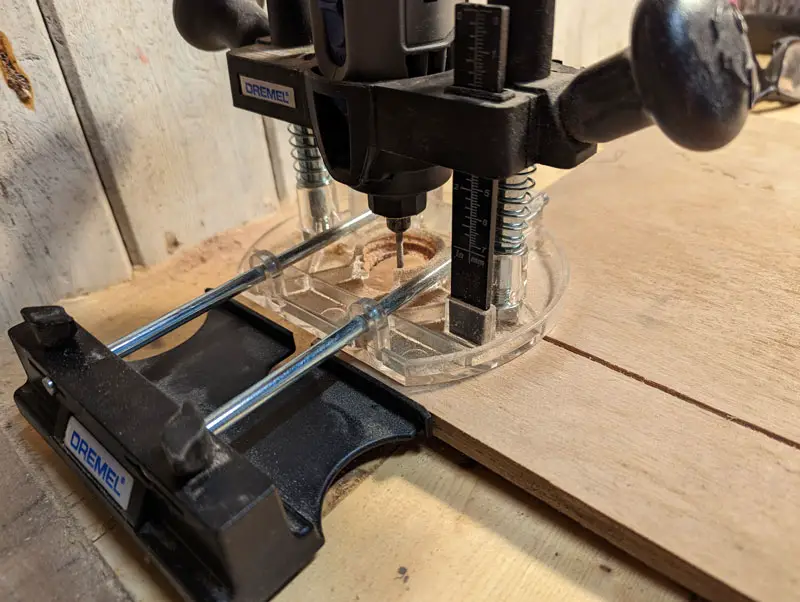
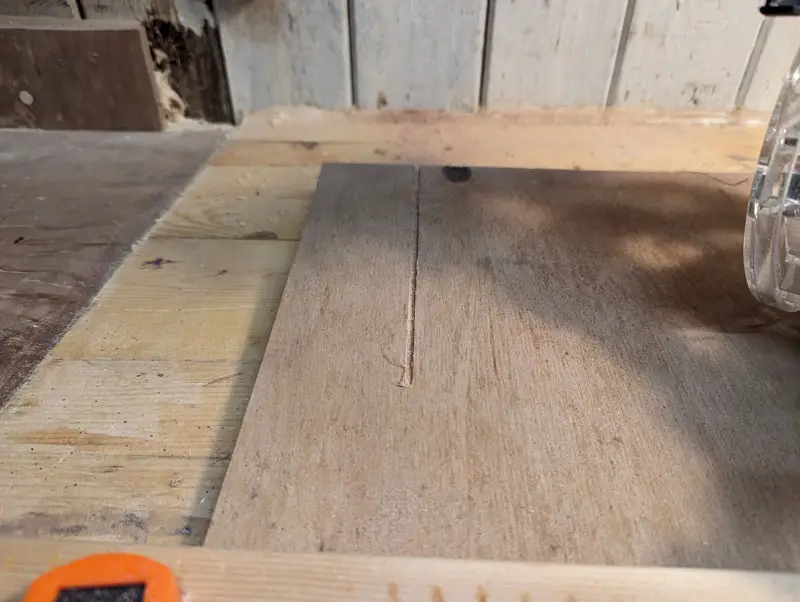
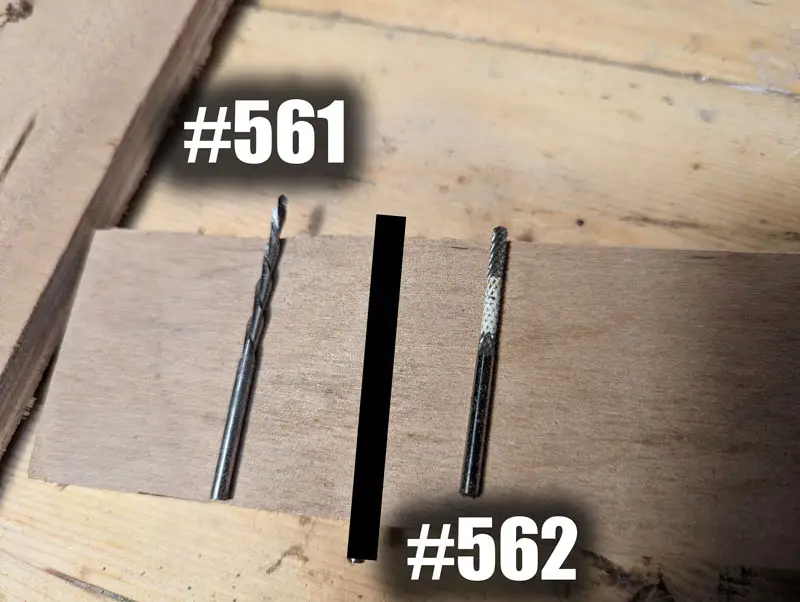
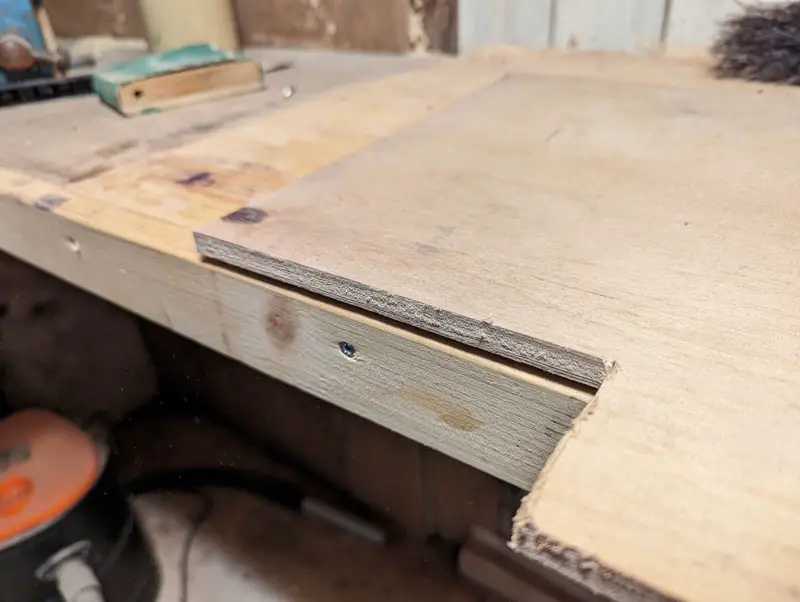
To make sure we are cutting straight we can use some sort of straight-edge guide. Dremel has 2 attachments with straight-edge guides, these are designed to help us make straight cuts.
But straight-edge guides will only help you cut straight if the outer edge of the wood is straight in the first place.
The Dremel Plunge Router #335-01 has a large straight-edge guide included in the kit. This straight edge works really well at keeping Dremel cutting straight, and the solid adjustable base makes it easy to cut the wood in several passes because you can adjust the depth and lock it in a position.
The Straight Cutting Guide #678 also works well for cutting straight relative to the edge of the wood. It is lighter and smaller than the plunge router, so it is a little bit easier to set up. But I prefer the plunge router over the straight-cutting guide.
You can also use the #565 Multipurpose Cutting Kit. When using this you want to clamp down a plank of straight wood on top of the wood you are cutting, this will then function as a straight-cutting guide.
The best bits for making straight cuts with an edge guide are the Dremel #562 tile-cutting bit or the Dremel #561 multi-purpose cutting bit.
I prefer using the #562 tile-cutting bit.
We want to make the cut in several passes, a good depth to cut each pass is about 1/8″ (3mm). That is the same size as the thickness of the bit you are using, so it is easy to know how deep you should go.
All the attachments mentioned above can adjust the cutting depth of the bit and lock it in place so it will stay the same during the entirety of the cut.
The number of passes it takes to cut through the wood will depend on the thickness of the wood. The plywood board in this example is about 0.4″ (1cm). It took me 4 passes to cut through the plywood.
When you want to achieve a straight cut it is really important that you secure the wood properly so it does not move during the cut. Clamps work great for this, and by using a flat plank you can distribute the clamping force across the object you are cutting.
When using this method for cutting I have found that it is best to use high RPMs when cutting. Set your Dremel anywhere from 25000 to 35000 RPMs.
Note! This method is very noisy. When cutting, the Dremel will sound like an angry be enhanced by a loudspeaker.
Method 2 – The Wood Cutting Wheel EZ544
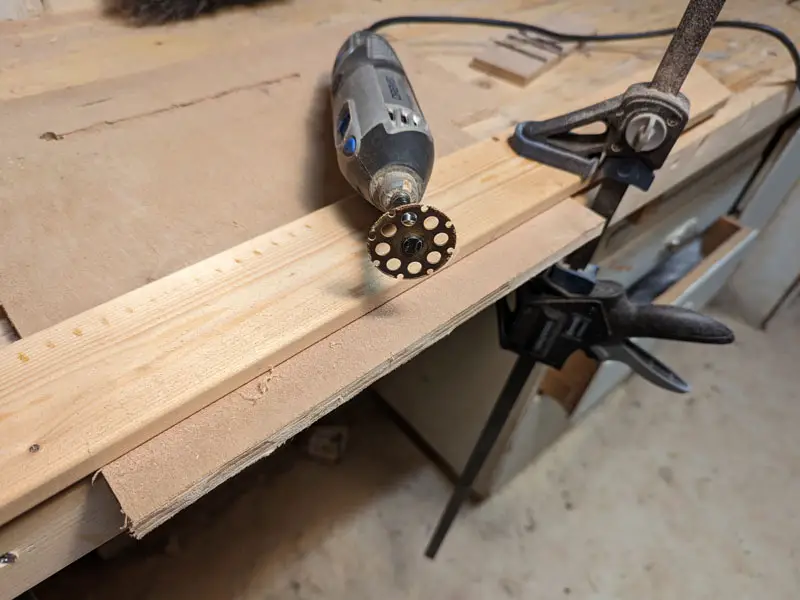
Using the wood cutting wheel EZ544 to cut a straight line is a lot quicker and less noisy than using a straight edge with the tile cutting bit, but it does not produce that clean cutting edge.
But the result is good enough, and if you want a clean cutting edge, then the Dremel is not really the tool for the job.
When cutting a straight line with the wood-cutting wheel we want to mark the cut and secure the wood with clamps before we start cutting.
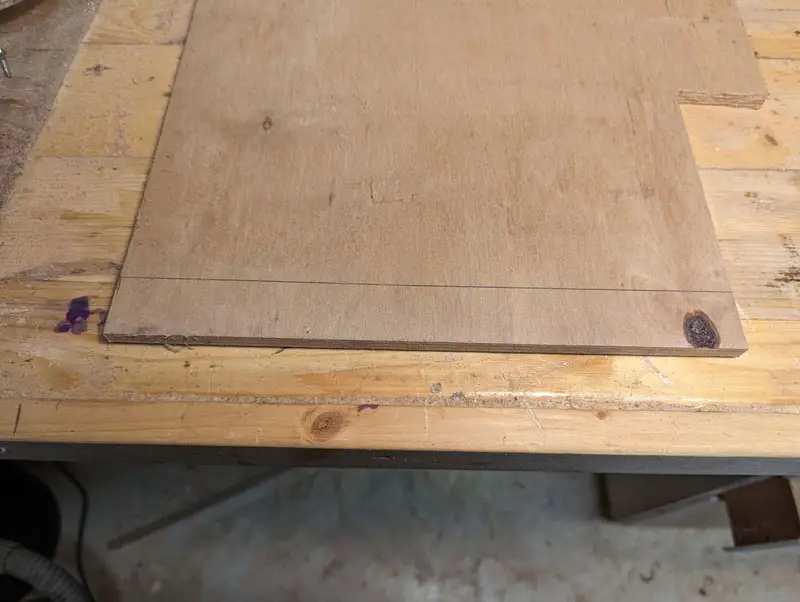
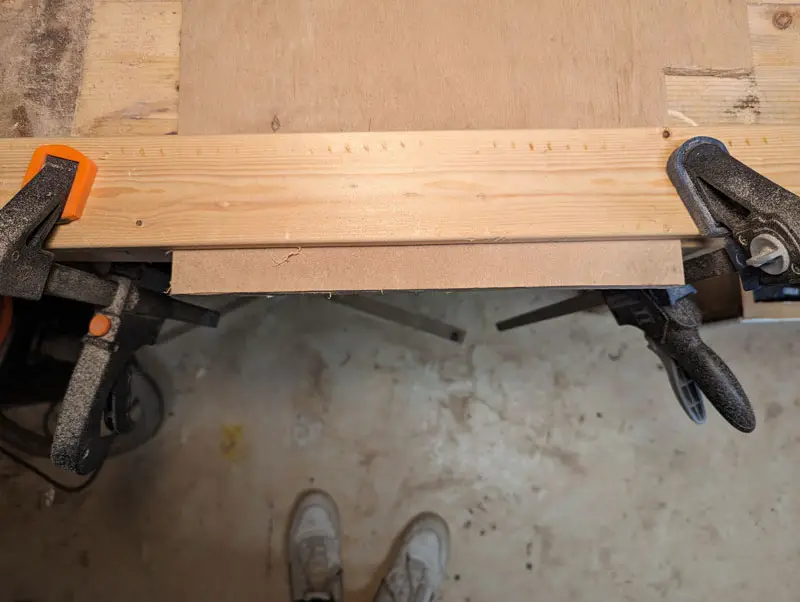
Set the Dremel to around 20 000 RPMs and start the cut.
We are making the cut without any cutting guides, so keep a steady hand while you try to follow the line. Do not cut all the way through the first pass. Just make sure you follow the line as well as possible.
On the second pass, we can cut all the way through the plywood, the groove we have already created will act as a guide for the rest of the cut.
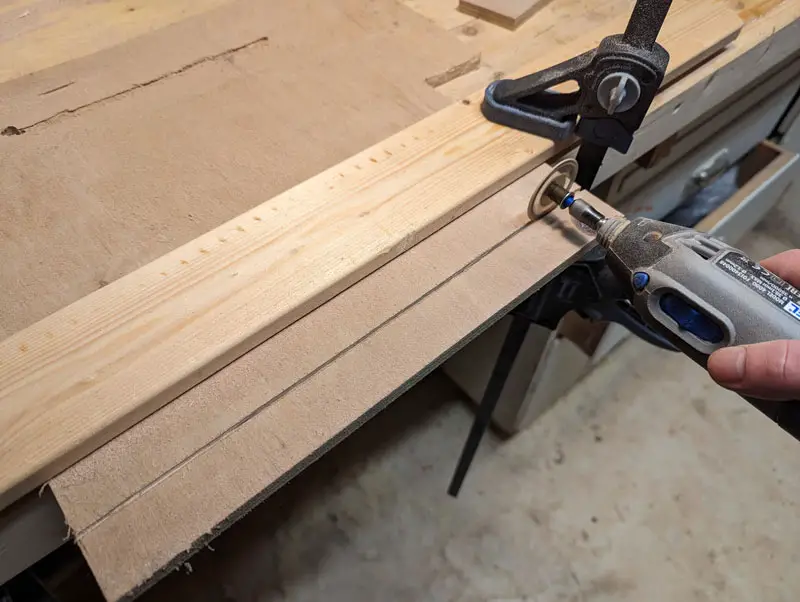
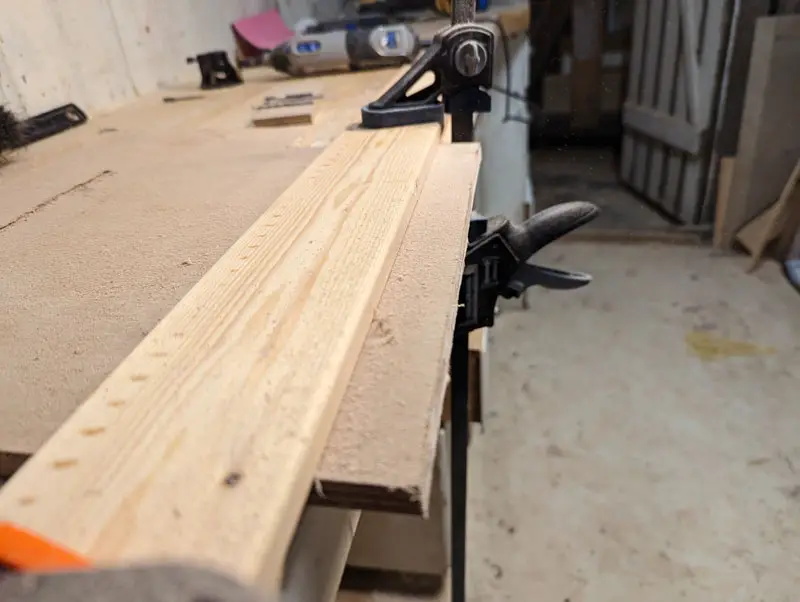
Here are the results when using the wood cutting wheel, a fairly straight cut, but with some rough bits to the edge.
I really like the #EZ544 wood-cutting wheel, it is extremely effective at cutting wood, and is the best wood-cutting bit for the Dremel in my opinion.
Method 3 – The Mini-Saw attachment
The Dremel #670 Mini-Saw Attachment is another great way to make straight cuts with a Dremel. This attachment transforms your Dremel into a mini circular saw.
When cutting with the mini saw it is fairly easy to follow the marked line as long as the wood is not too thick.
You can also make a DIY guide for the mini saw by clamping down a straight piece of lumber to act as the fence.
The mini saw is great for making straight cuts in thin materials like HDF, MDF, laminate, plywood, cabinet backing boards, and others.
The Mini-Saw is best used for cutting material that is 1/4″ (6.3mm) thick or less.
Here is a great video that shows you how the Mini-Saw attachment works in action.
Final Words
These are the three main methods I would consider using when I want to make clean and straight cuts in wood with a Dremel.
But as I said earlier, a Dremel is not really the right tool for making clean and straight cuts in wood, but it will get the job done with some effort.
Use these methods on thin pieces of wood, I would not cut anything thicker than 0.5 Inches (1.25 Cm).
